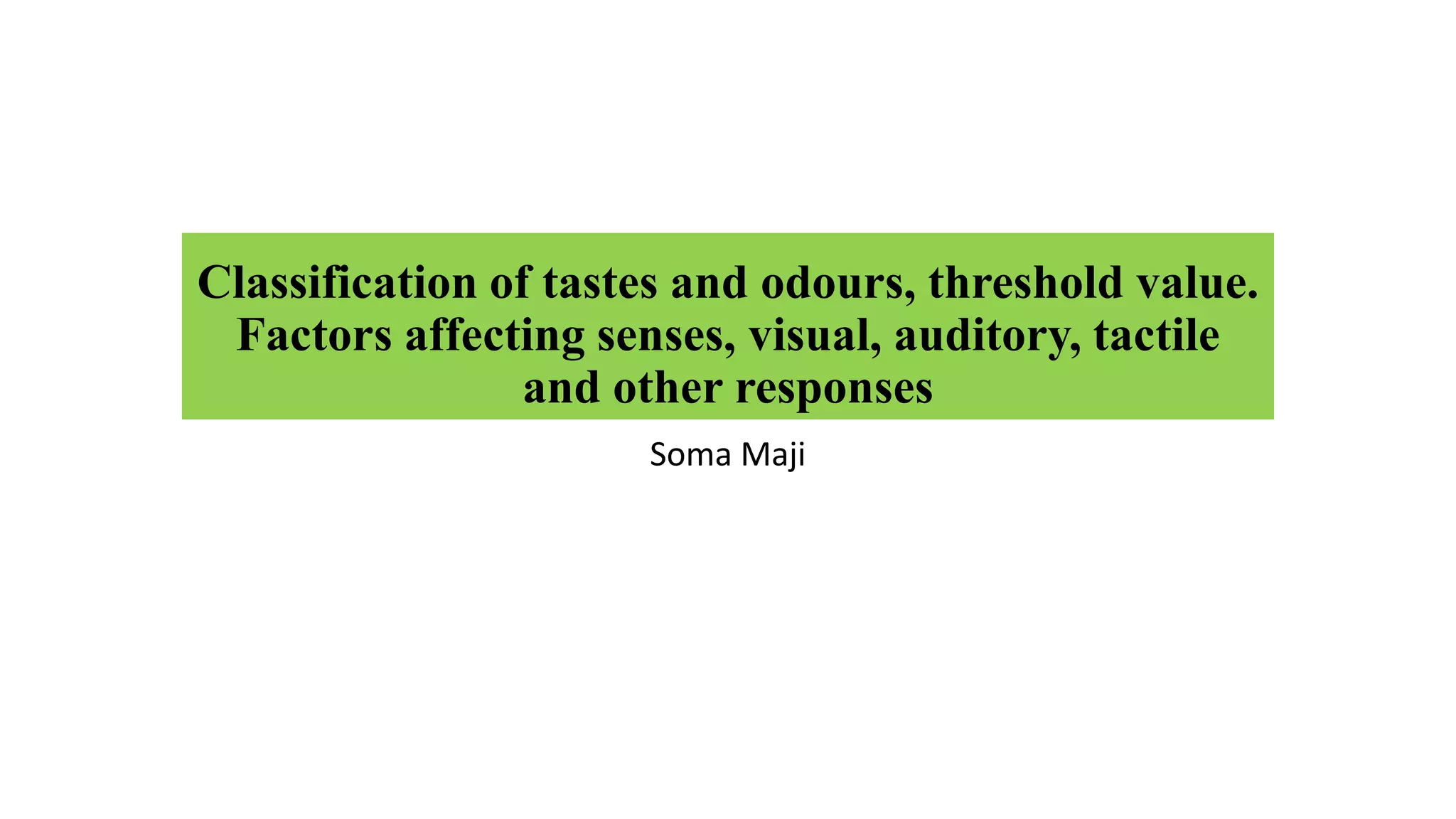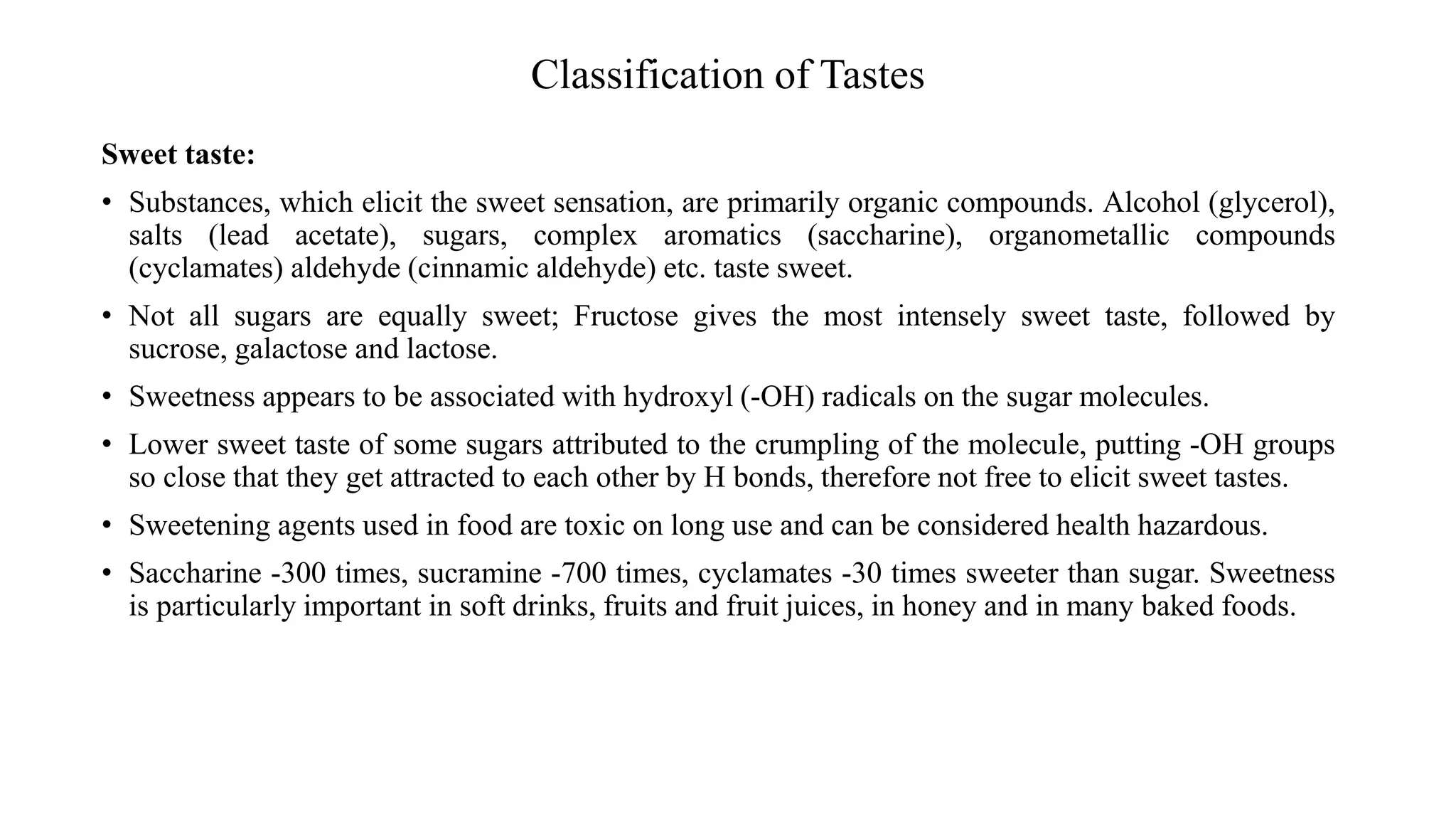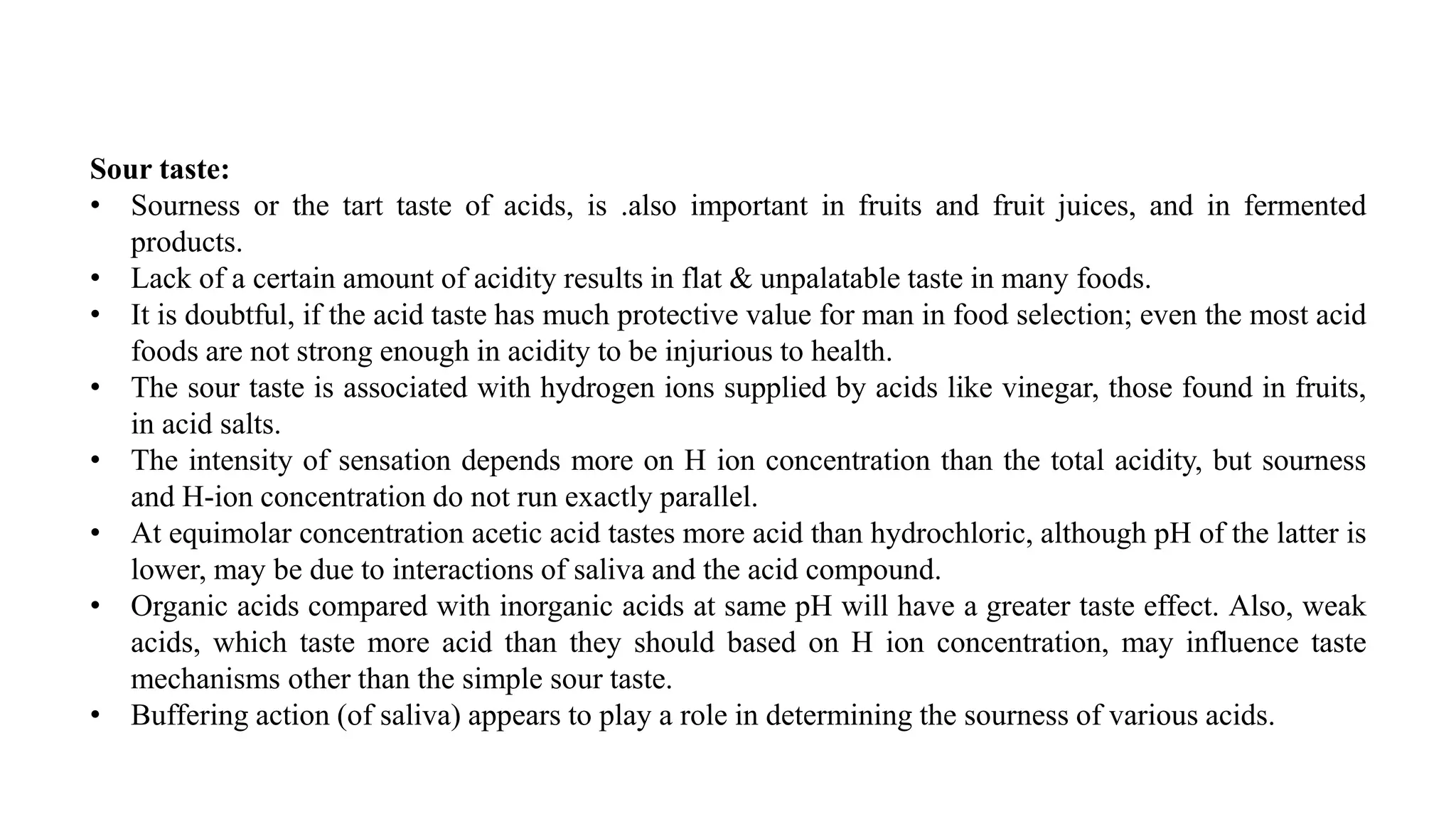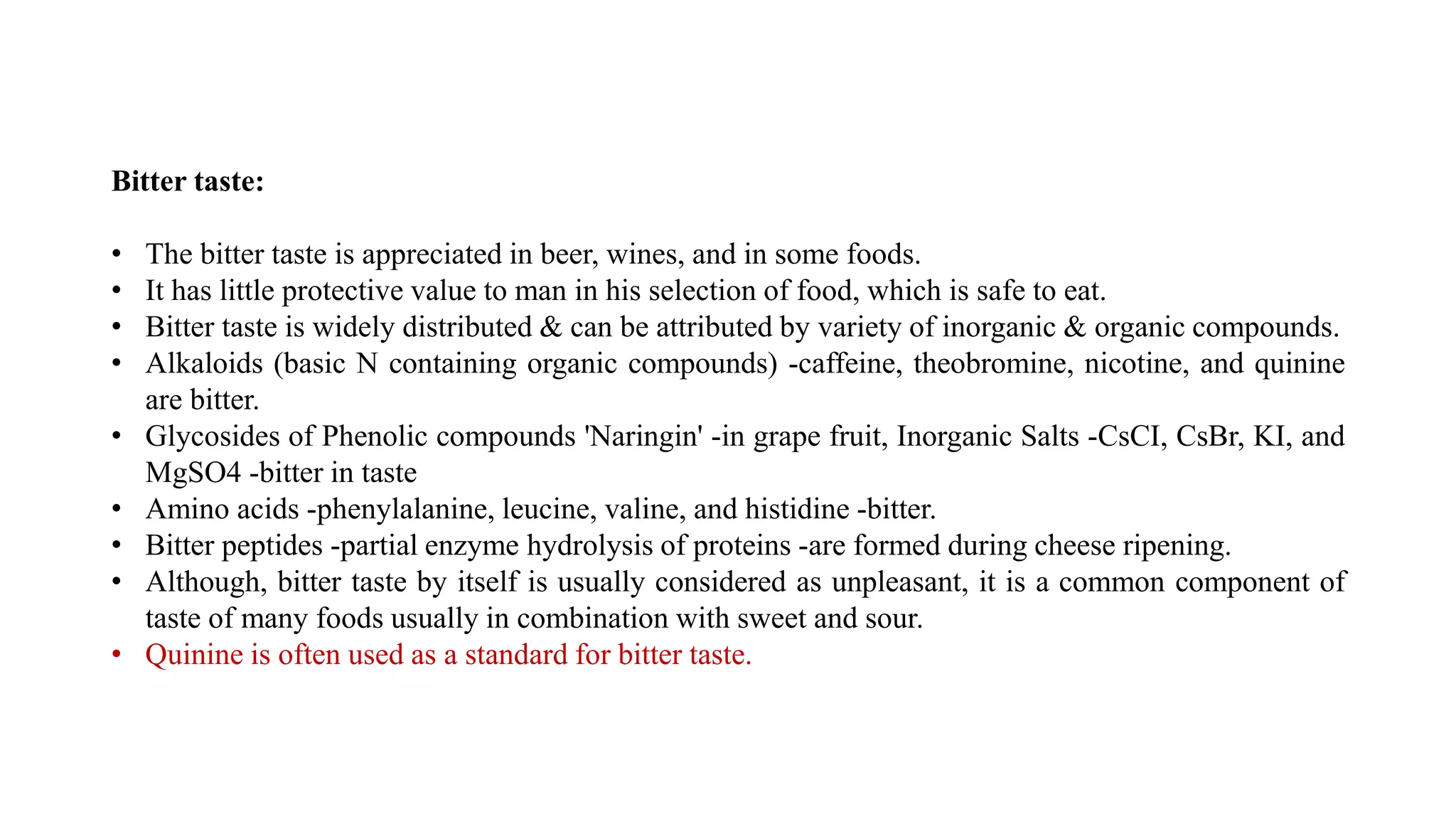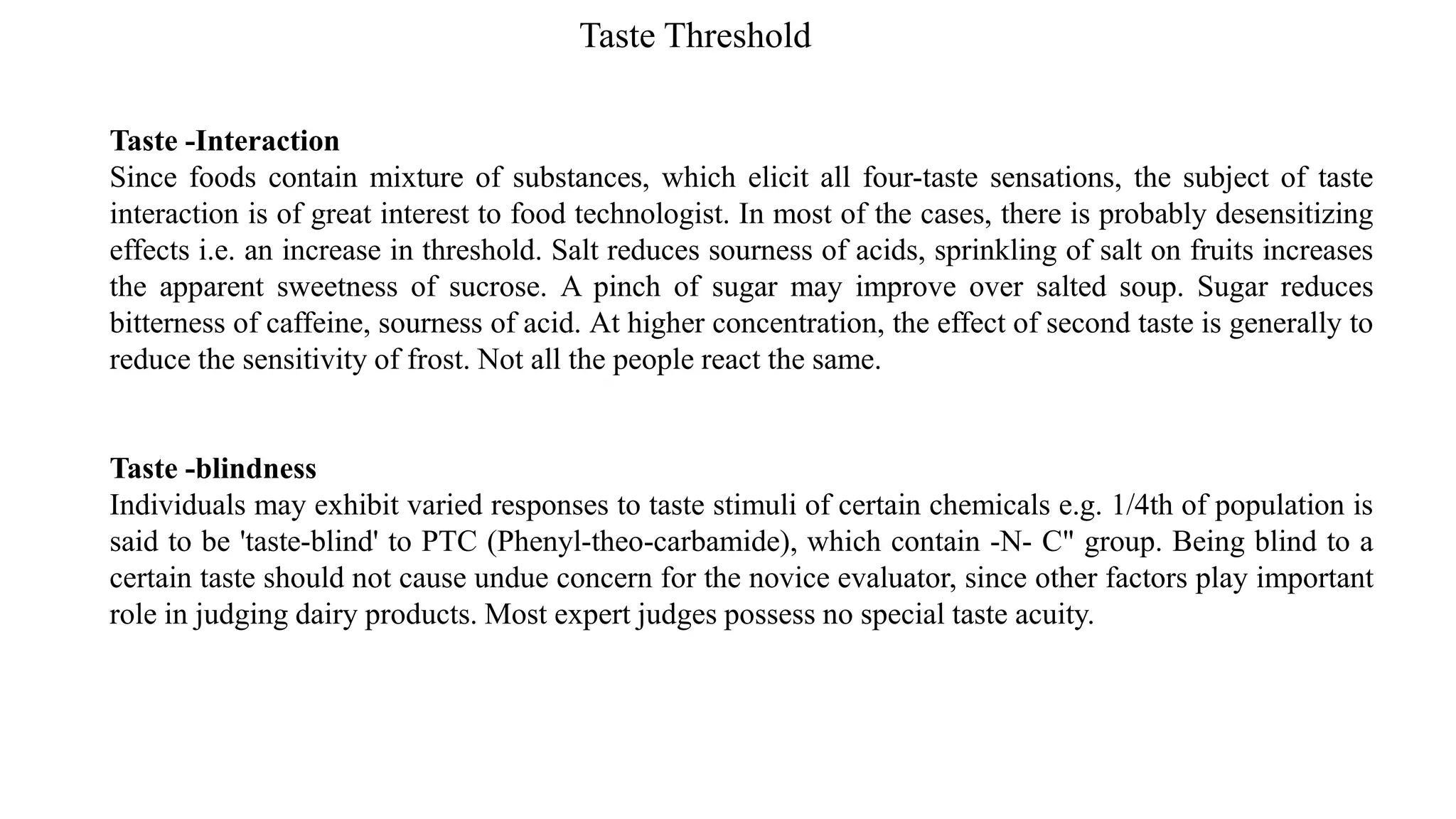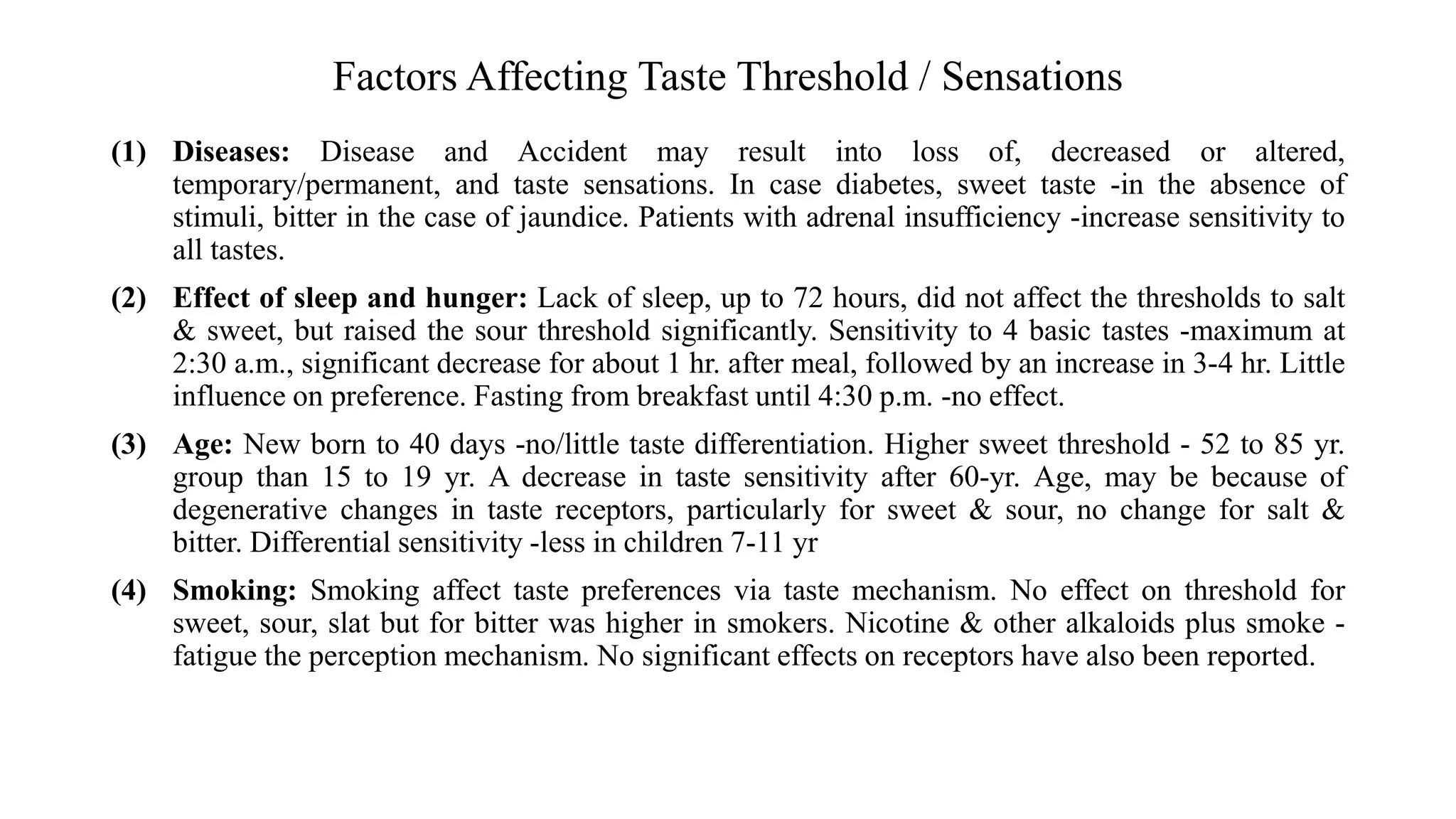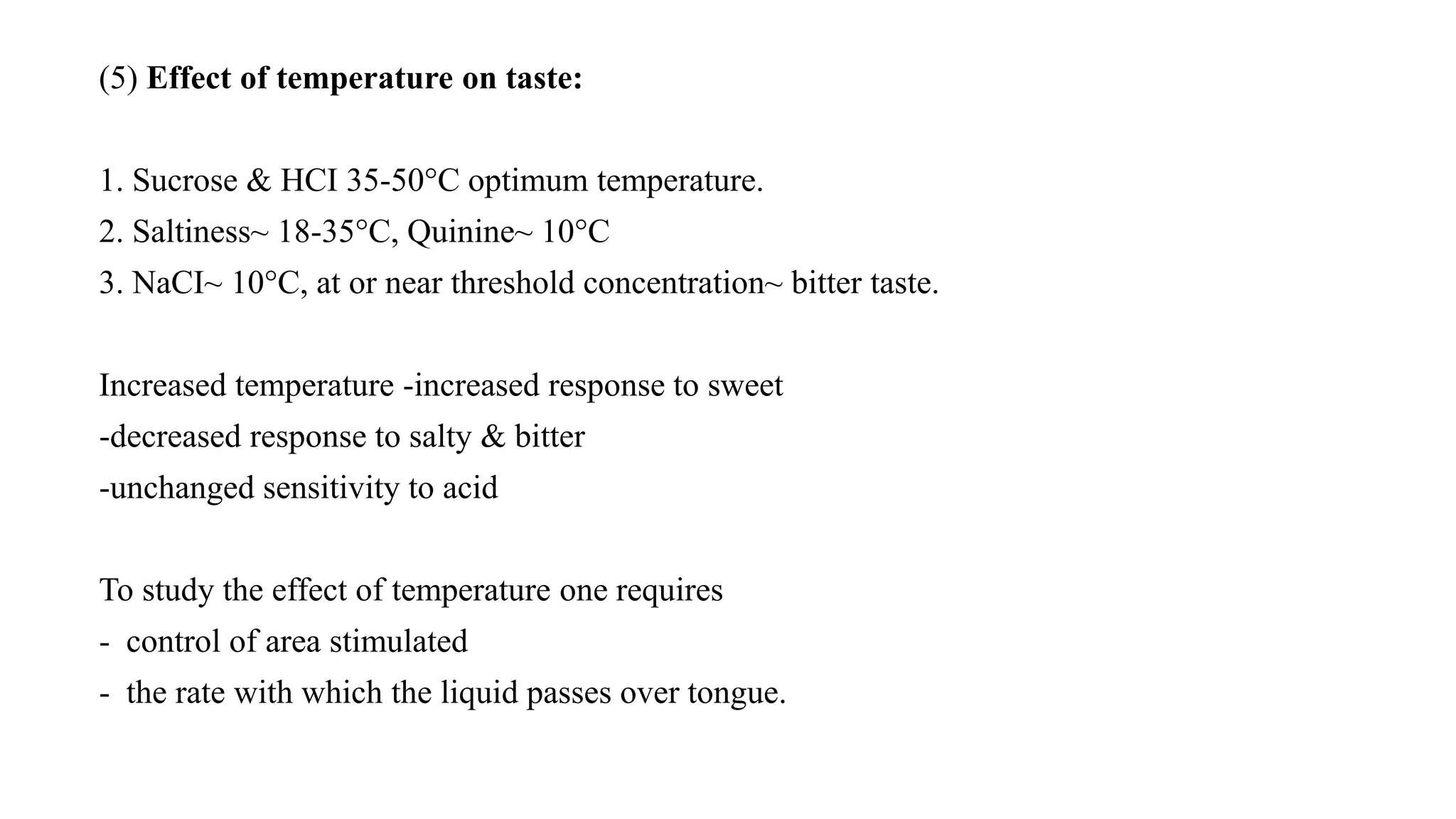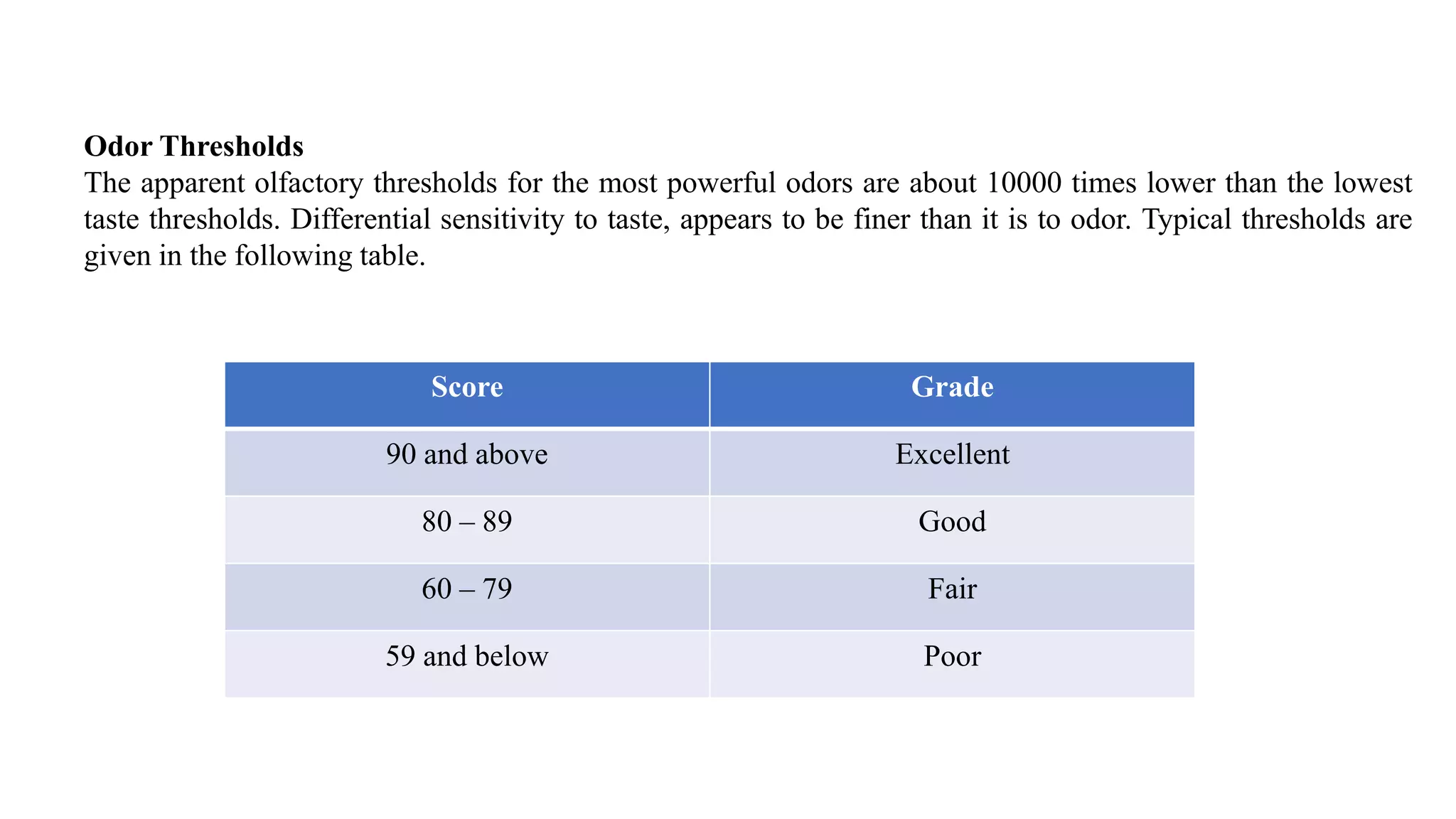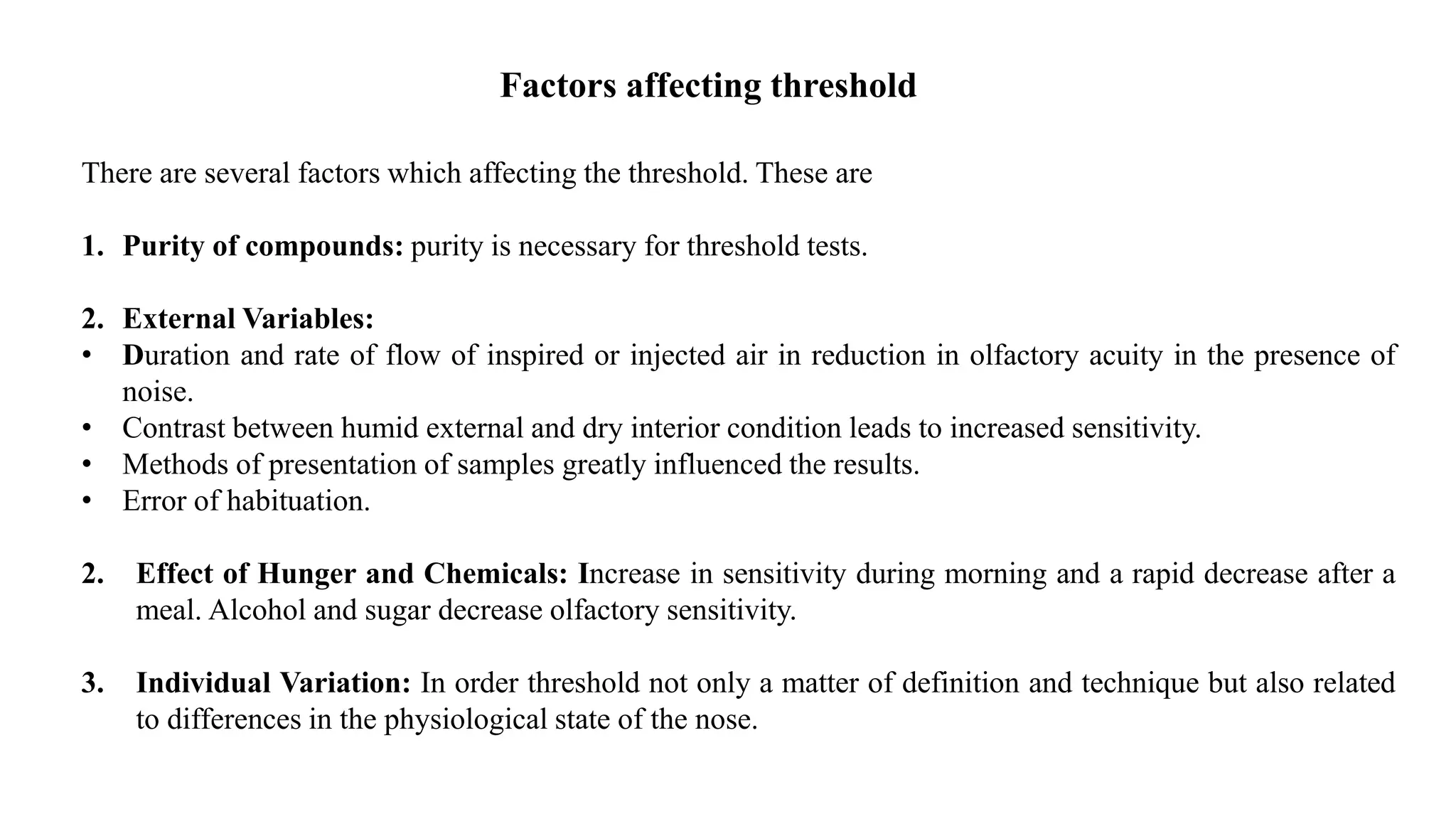The document explains the classification of tastes and odors, detailing their physiological and chemical interactions, effects of various factors like age, smoking, and temperature on taste perception. It covers the four basic tastes (sweet, sour, salty, bitter) and how they relate to compounds and sensory responses, alongside a classification framework for odors and their thresholds. Insights into sensory evaluation techniques, including olfactometry and the influence of individual physiological differences, are also provided.
